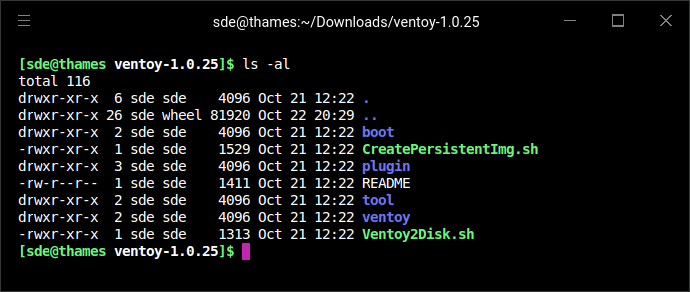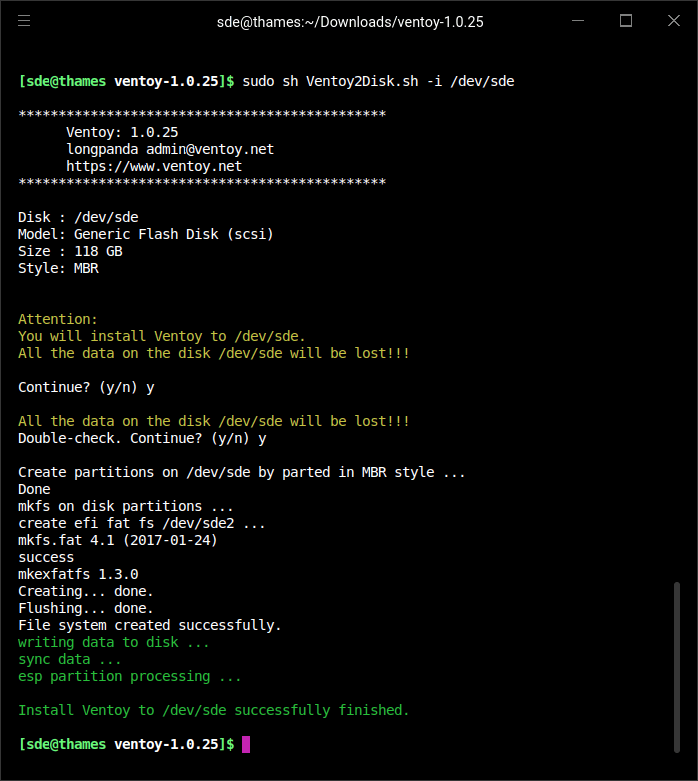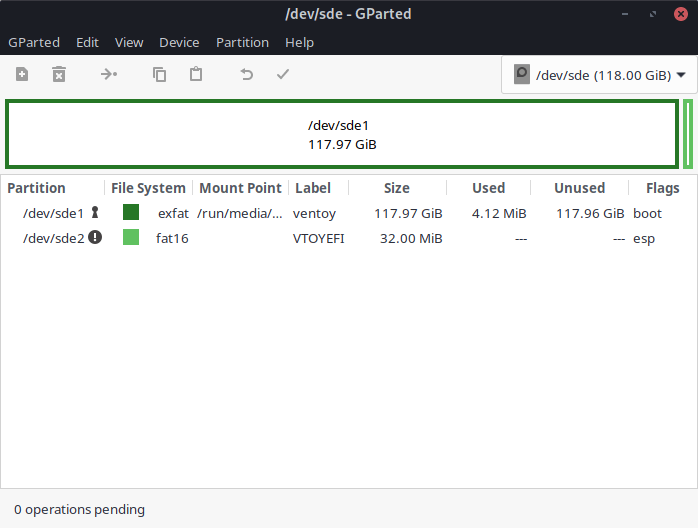Last Updated on May 28, 2022
Essential System Utilities is a series of articles highlighting essential system tools. These are small utilities, useful for system administrators as well as regular users of Linux based systems.
The series examines both graphical and text based open source utilities. For details of all tools in this series, please check the table at the bottom.
This article looks at Ventoy, a versatile utility that creates a bootable USB drive for ISO (and other) files. A USB drive is formatted, and you install Ventoy once. Then you can copy ISO files to the USB drive and boot from it.
Installation
Download the compressed tarball from the project’s GitHub page. At the time of writing, the file is ventoy-1.0.27-linux.tar.gz. Extract the contents with the command:
$ tar zxvf ventoy-1.0.27-linux.tar.gz
Change into the newly created directory:
$ cd ventoy-1.0.27
Here’s a directory listing. We’re using a slightly older version.

If the USB drive has more than 1 partition, you’ll first need to delete the partition(s). Make sure there’s no data on the USB drive that you need. Use a program such as GParted. Once done, we can then run the Ventoy2Disk.sh shell script to write the program to the USB drive.
$ sudo sh Ventoy2Disk.sh -i /dev/XXX
where /dev/XXX is the USB device you’re using as the bootable USB drive. In the example below, that’s /dev/sde.

The USB drive is now divided into 2 partitions.

Next page: Page 2 – In Operation
Pages in this article:
Page 1 – Introduction / Installation
Page 2 – In Operation
Page 3 – Summary
Complete list of articles in this series:
| Essential System Tools | |
|---|---|
| Alacritty | Innovative, hardware-accelerated terminal emulator |
| BleachBit | System cleaning software. Quick and easy way to service your computer |
| bottom | Process/system monitor for the terminal |
| btop++ | Monitor usage and stats for CPU, memory, disks, network and processes |
| catfish | Versatile file searching software |
| Clonezilla | Partition and disk cloning software |
| CPU-X | System profiler with both a GUI and text-based |
| Czkawka | Find duplicate files, big files, empty files, similar images, and much more |
| ddrescue | Data recovery tool, retrieving data from failing drives as safely as possible |
| dust | More intuitive version of du written in Rust |
| f3 | Detect and fix counterfeit flash storage |
| Fail2ban | Ban hosts that cause multiple authentication errors |
| fdupes | Find or delete duplicate files |
| Firejail | Restrict the running environment of untrusted applications |
| Glances | Cross-platform system monitoring tool written in Python |
| GParted | Resize, copy, and move partitions without data |
| GreenWithEnvy | NVIDIA graphics card utility |
| gtop | System monitoring dashboard |
| gWakeOnLAN | Turn machines on through Wake On LAN |
| hyperfine | Command-line benchmarking tool |
| HyFetch | System information tool written in Python |
| inxi | Command-line system information tool that's a time-saver for everyone |
| journalctl | Query and display messages from the journal |
| kmon | Manage Linux kernel modules with this text-based tool |
| Krusader | Advanced, twin-panel (commander-style) file manager |
| Nmap | Network security tool that builds a "map" of the network |
| nmon | Systems administrator, tuner, and benchmark tool |
| nnn | Portable terminal file manager that's amazingly frugal |
| pet | Simple command-line snippet manager |
| Pingnoo | Graphical representation for traceroute and ping output |
| ps_mem | Accurate reporting of software's memory consumption |
| SMC | Multi-featured system monitor written in Python |
| Timeshift | Reliable system restore tool |
| QDirStat | Qt-based directory statistics |
| QJournalctl | Graphical User Interface for systemd’s journalctl |
| TLP | Must-have tool for anyone running Linux on a notebook |
| Unison | Console and graphical file synchronization software |
| VeraCrypt | Strong disk encryption software |
| Ventoy | Create bootable USB drive for ISO, WIM, IMG, VHD(x), EFI files |
| WTF | Personal information dashboard for your terminal |
